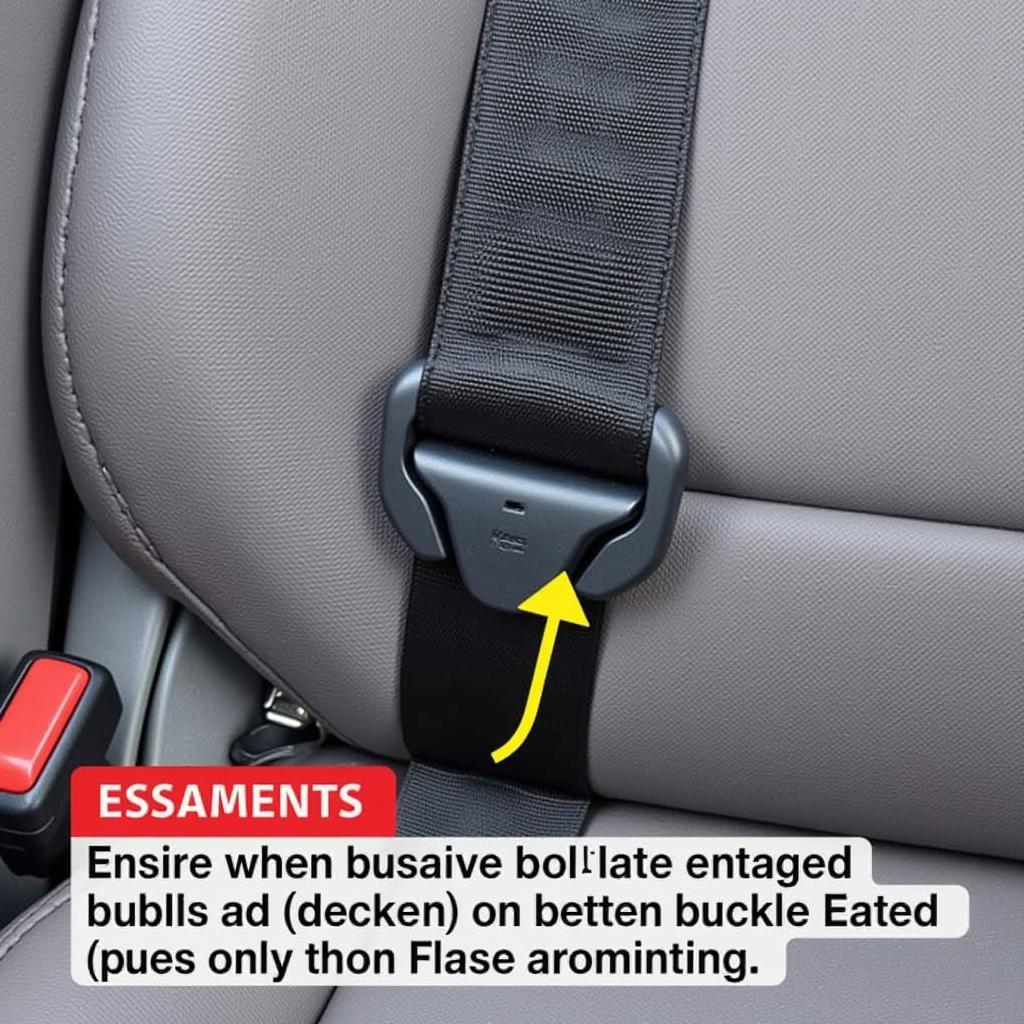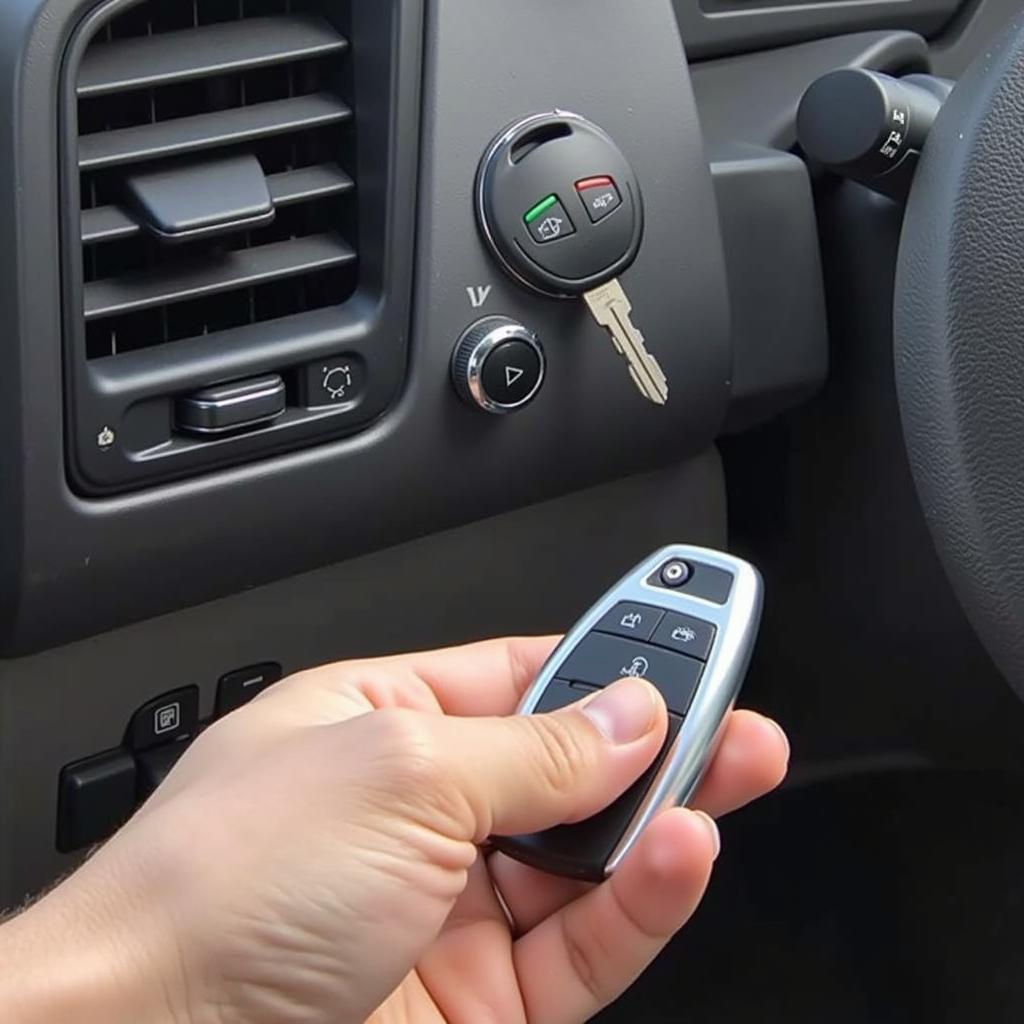A glowing warning light on your dashboard is never a welcome sight. While some simply indicate maintenance needs, others signal serious issues demanding immediate attention. Among these warning lights, those related to your car seats can be particularly confusing. What do they mean, and how should you react? This guide delves into the common seat warning lights, their implications, and steps for resolution.
Understanding the messages behind these warning lights ensures your safety and that of your passengers. Let’s decode these signals and empower you to address them effectively.
Common Seat Warning Lights and Their Meanings
Modern vehicles are equipped with sophisticated sensor systems designed to detect and alert you to potential problems. When it comes to your seats, these warning lights could signify various issues:
1. Airbag Warning Light:
This light, often depicted as a seated figure with a deployed airbag, is crucial. It indicates a potential problem with the airbag system, which could be related to the seat occupancy sensor. A malfunctioning sensor might prevent the airbag from deploying during a collision or cause it to deploy unnecessarily.
2. Seat Belt Warning Light:
This light, typically showing a red image of a person with a seat belt unfastened, is a reminder to buckle up. It illuminates when the sensor in the seat buckle detects weight but no engagement of the belt. In some vehicles, this light might also be accompanied by an audible warning chime.
3. Seat Occupancy Sensor Warning Light:
This light, which might vary in appearance depending on the car model, specifically indicates a problem with the seat occupancy sensor. This sensor determines whether a passenger is occupying the seat and adjusts airbag deployment accordingly. A malfunctioning sensor could lead to airbag deployment issues.
Why Seat Warning Lights Are Important
These warning lights are not to be ignored. They are crucial safety features directly impacting the effectiveness of your vehicle’s safety restraint system, particularly the airbags.
Consider this: a faulty seat occupancy sensor might disable the passenger-side airbag if it incorrectly senses an empty seat. In a collision, this could have dire consequences.
Troubleshooting Seat Warning Lights
While diagnosing the exact cause of a seat warning light often requires professional expertise, there are a few things you can check:
1. Check Connections:
Start by ensuring all seat belt buckles are properly fastened. If the warning light persists, inspect the wiring connections under the seats. Sometimes, loose connections or damaged wires can trigger these warnings.
2. Inspect for Objects:
Ensure there are no objects lodged under the seats that might be interfering with the sensors. Even a stray coin or pen can disrupt their functionality.
3. Reset the System:
In some cases, a temporary glitch might be causing the warning light. Disconnecting the car battery for a few minutes and then reconnecting it can sometimes reset the system and clear the error.
 Close-up of a Fastened Seat Belt Buckle
Close-up of a Fastened Seat Belt Buckle
When to Seek Professional Help
If the warning light persists after these preliminary checks, it’s crucial to consult a qualified mechanic specializing in automotive electrical systems. They have the diagnostic tools and expertise to identify the root cause of the problem and carry out the necessary repairs.
Attempting to fix complex electrical systems yourself can be dangerous and potentially worsen the issue.
Preventing Future Seat Warning Lights
Regular car maintenance is key to preventing many vehicle issues, including seat warning lights. Here’s what you can do:
1. Routine Inspections:
During scheduled maintenance, request a check of all warning lights and related systems, including the seat belts, airbags, and occupancy sensors.
2. Careful Cleaning:
When cleaning your car’s interior, be mindful of the areas around the seats and avoid excessive moisture that could damage electrical components.
3. Prompt Repairs:
Address any seat-related issues, such as ripped seat covers or malfunctioning seat adjusters, promptly to prevent further damage and potential sensor problems.
Conclusion
Seat warning lights are essential safety indicators in your vehicle. Understanding their meaning and responding promptly is crucial for ensuring the optimal function of your car’s safety restraint system.
While some simple troubleshooting steps can help, don’t hesitate to seek professional assistance when needed. Prioritizing regular maintenance and addressing issues promptly will go a long way in preventing future seat warning lights and ensuring a safe and enjoyable driving experience.
FAQs
1. Can I drive my car with a seat warning light on?
It’s not advisable. While some seat warning lights might indicate minor issues, others, like the airbag warning light, signal potentially serious problems.
2. How much does it cost to fix a seat occupancy sensor?
The cost can vary depending on the car make and model and the complexity of the repair.
3. Can a car accident trigger seat warning lights?
Yes, an accident can potentially damage sensors or wiring, leading to seat warning lights.
4. Are aftermarket seat covers safe to use?
While most aftermarket seat covers are safe, ensure they are properly installed and don’t interfere with the seat belts or sensors.
5. What should I do if my seat belt warning light stays on even when I’m buckled up?
This could indicate a faulty seat belt buckle or sensor. It’s best to have it inspected by a professional.



